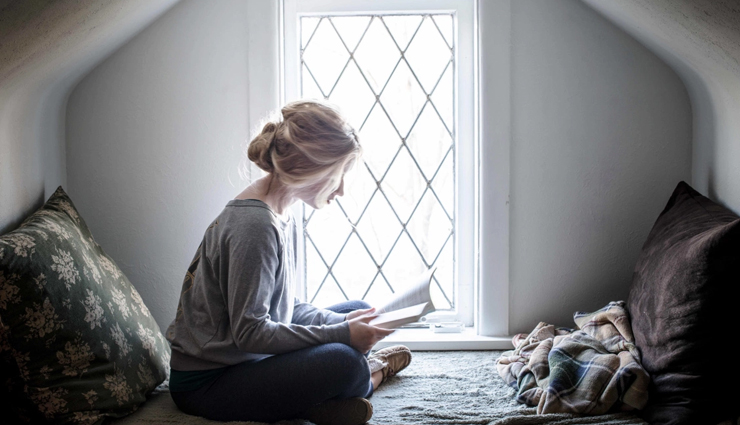- Home›
- Mates & Me›
- 12 Tips How To Cry And Let It All Out
12 Tips How To Cry And Let It All Out
By: Kratika Thu, 15 Sept 2022 1:42:15

Life can be hard, and the pressure is too much to handle. But you don’t need to keep it locked inside of you. Instead, learn how to cry and let it all out.
Crying helps rebalance your hormones and alleviates built up stress in your body. If you’re heading to therapy, your therapist will work on helping you to release your emotions in a positive way, which includes crying. So, here are some tips on how to cry and let it all out to get you started.
Maybe I’m biased, but I’m a huge advocate for therapy. Of course, you can talk to your friends and family, but going to a third person, someone who knows nothing about you, is a great way to sort through your problems without prejudice. If you go to therapy, you already know the importance of crying. If you’re new to this, well, let me tell you, it’s good to cry.

# It’s scientifically backed
A study found that though people generally decrease in mood right after crying, around 90-minutes after, people report feeling better than they did prior to crying. This is the first study to show a direct correlation between crying and mood improvement. You can’t argue with science!
# Forget what people told you about crying
Many people think crying is a sign of weakness, and if you cry, you’re less of a person. However, that’s all a giant lie. This whole “boys don’t cry” ideology is actually emotionally and mentally destroying you.
It’s healthy to cry, it’s healthy to feel emotions. If it wasn’t healthy to cry, the human body wouldn’t be designed with this ability.
# Why do you hold it in?
Before you cry, it’s important to reflect to why you’re unable to cry. Why do you hold it in? Is it because you think you’ll be seen as weak? Do you struggle to express your feelings in general? Finding out why you don’t cry helps you overcome these issues. Once you accept and move past why you do allow yourself to cry, you can work on trying to cry.
# Find a safe place to cry
Now, this safe place could be anywhere. Maybe you’re the safest in your kitchen, bedroom, or at your therapist’s. Wherever it is that you feel safe, it should be the place where you allow yourself to let go.
Most of us refrain from crying because we don’t feel comfortable, so make yourself comfortable. If you’re concerned about people hearing you, put music on or take a shower.

# Get focused
Some people cry regardless of where they are, but if you struggle with crying, then you need to get yourself focused. If you’re wondering how to cry and let it all out, start by clearing your head from any distractions. If the TV is on, turn it off. Don’t text your friends or talk on the phone. Instead, just spend some alone time with yourself but complete alone time.
# What’s making you want to cry?
You need to focus on what’s causing your feelings of sadness, frustration, and anger. It could be anything, but you know exactly why you’re pushing down these emotions. It’s time to focus on these moments which cause you sadness and focus on how much these situations negatively affect you.
# Your body is going to react
You’ll feel your body react. Everyone is different, so it could be the feeling of heat or trembling. It depends on the person. But you will most likely feel your throat tighten which is a sign your emotions are swelling inside of you. This is when you allow your emotions to overcome you instead of fighting this feeling your experiencing.
# Let it all out
Once you start crying, don’t stop. Cry and let it all out. Typically, the average length of a solid crying session is six minutes. Now, don’t set the timer on your phone, let yourself cry it out for as long as you’d like. Your crying session may only last a couple minutes while for others it could last longer. It really depends on you.

# You’re not going to feel better right away
Now after you cry, don’t assume that you’ll automatically feel like a million dollars. You need to give it around 90 minutes after you cry before you feel a difference. But you’ll most likely feel emotionally and mentally lighter. But if you’re harboring a lot of emotions, it may take a couple sessions before you feel better.
# Use emotional triggers
If you’re unable to cry on your own, try using emotional triggers such as sad films, moments in your life, or emotional music. They can help you trigger your emotions. If you don’t know what your triggers are, well, give it a try. Watch a sad movie like Blue Valentine, Marley and Me, Titanic, or Schindler’s List.
# Remember to reflect
It’s easy to cry but harder to reflect on your emotions and think about why you’re crying and what causes you stress. When you feel better after your cry, you’ll think you’re completely relieved. Don’t assume that you’ve figured everything out just yet. Reflect, reflect, reflect.
# Use crying in moderation
At the end of the day, regardless of what it is, you want to do things in moderation. This also includes crying. Too much crying makes you feel hopelessness, however, crying can be used to process your emotions and move on from them.





